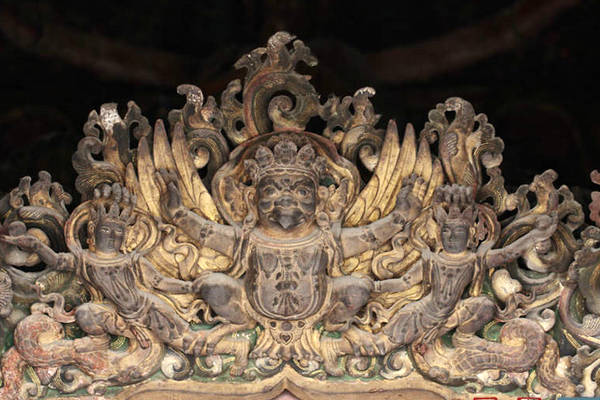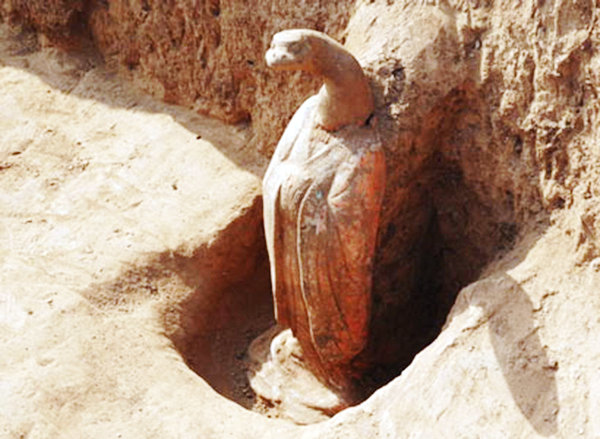Tian Long Ba Bu: Not just a Jin Yong novel

Deva in a painting.
As one masterpiece of writer Jin Yong,Tian Long Ba Bu(《天龙八部》) is not a strange name to people who are fond of kungfu novels and films. At least six TV and film adaptations and related video games have debuted since the novel was published in 1963.
Despite the book's popularity, not many people know the meaning of its name. The name, Tian Long Ba Bu, originates from Buddhist texts. It is a general name for eight categories of protective gods in Buddhism.
The eight groups are Deva (天), Naga (龙), Yaksa (夜叉), Gandharva(乾闼婆), Garuda(迦楼罗), Kinnara(紧那罗), Ashura (阿修罗) and Mahiraga(摩呼罗迦).
Deva
Deva don’t work, but lead a luxurious life and have longer lives than humans. In Buddhism, they will die and may become reincarnated as humans or animals in their next life.

A painting of Naga.
Naga
Naga is translated as "dragon" in Chinese, but these are different creatures that live under the water. Yet similar with dragons in Chinese ancient myths, they could also make it rain.

A statue of Yaksa.
Yaksa
In Chinese, fierce and tough women are calledmu ye cha(female Yaksa). Yaksa is often considered as a kind of devil, who has a scary face and an extremely bad temper. In Buddhist texts, they are gods who eat devils and protect the world.

Gandharva in a fresco.
Gandharva
Gandharva are gods of fragrance. They live on fragrance rather than food. Gandharva is in charge of music for Deva. In the frescoes of Dunhuang Mogao Grottos, the gods holding flowers and jewelry are Gandharva.

A statue of Garuda.
Garuda
Garuda is a bird-shaped god. It needs to eat hundreds of dragons a day to stay alive.

Kinnara in a fresco.
Kinnara
These are gods of music who can also be found playing musical instruments in the frescoes of Dunhuang Mogao Grottos.

A statue of Ashura.
Ashura
Ashura have two sexes, male and female. The males are very ugly, yet the females are very pretty. They are stubborn and grumpy and often fight against Deva for delicious food.

A statue of Mahiraga.
Mahiraga
Mahiraga are half-snake and half-human gods. They were deaf, dull and ignorant before practicing Buddhism. In 1993 filmGreen Snakeadapted from Lilian Lee’s novel of the same title, the theme song is calledMahiraga, indicating the tale of the two snakes in the film.

